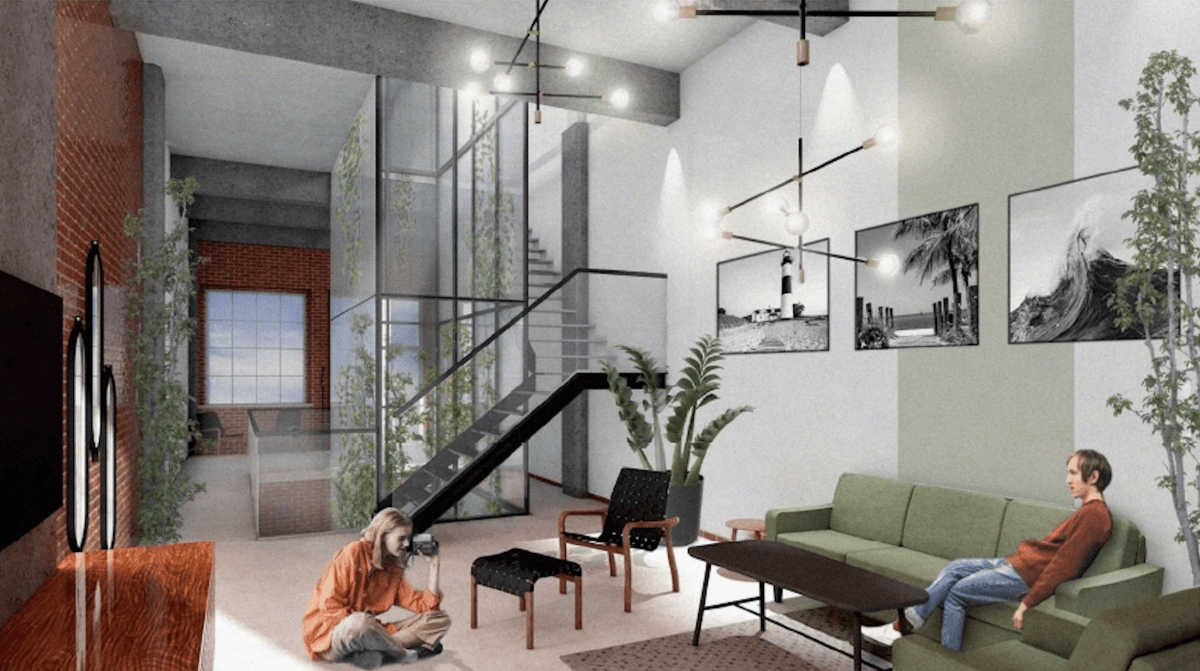
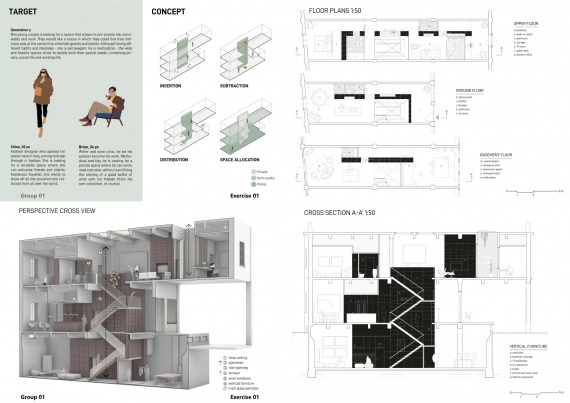
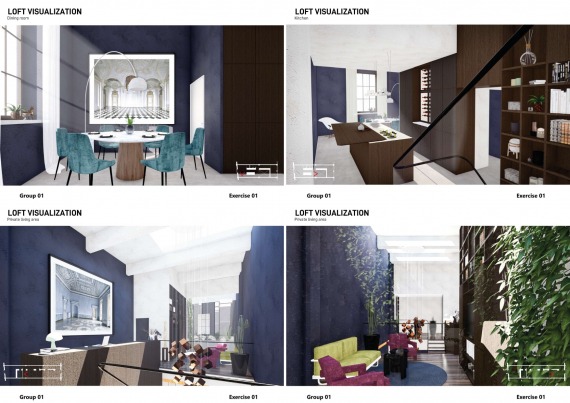
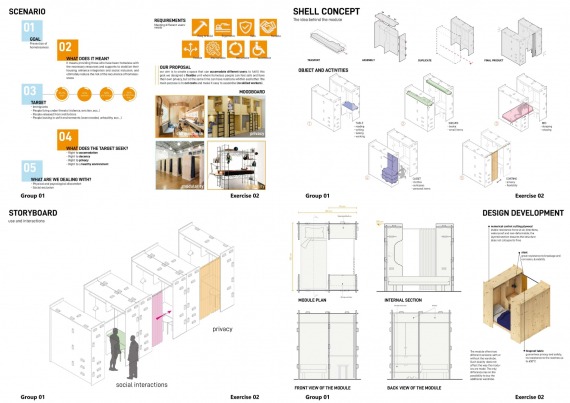
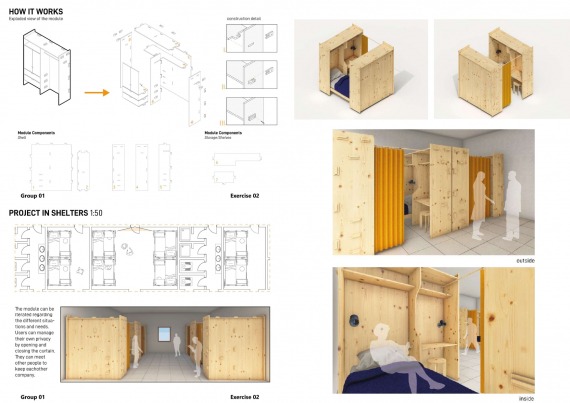
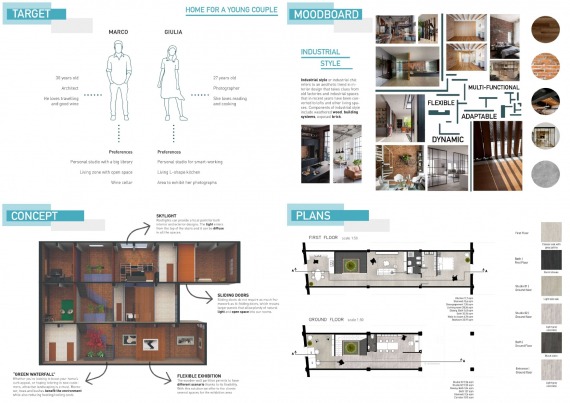
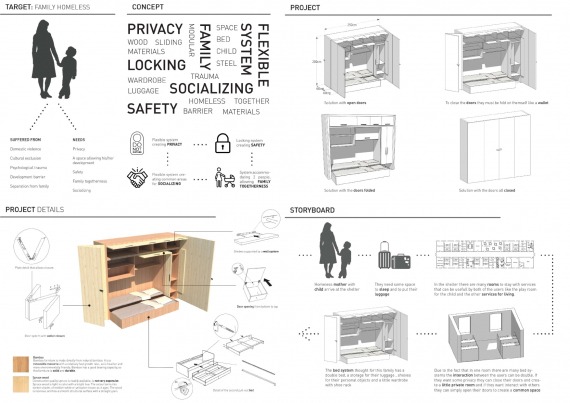
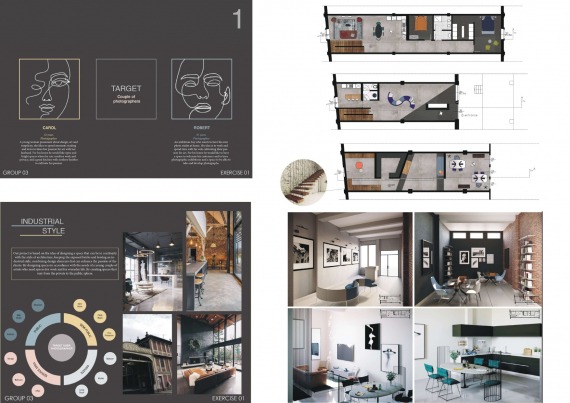
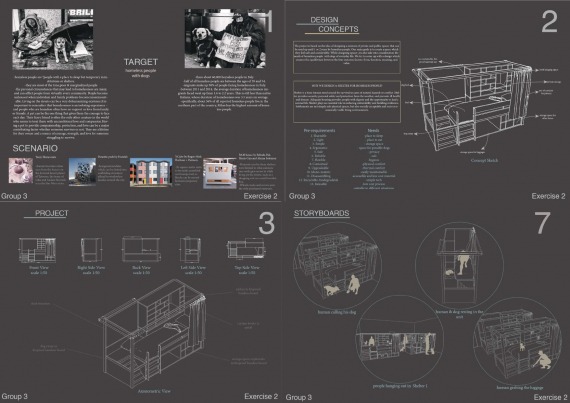
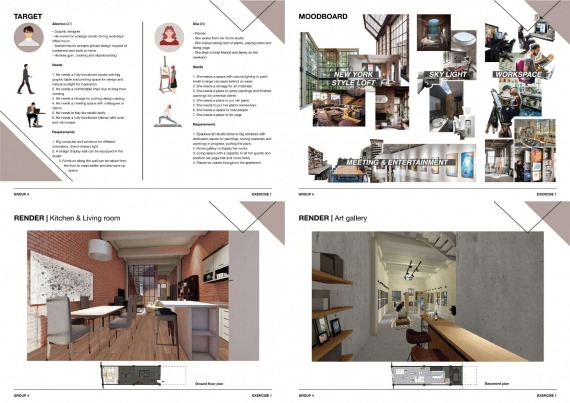
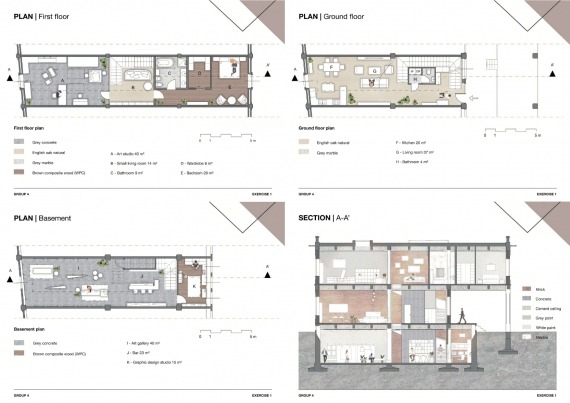
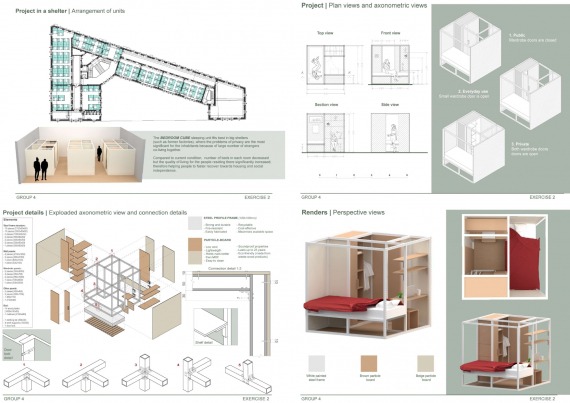
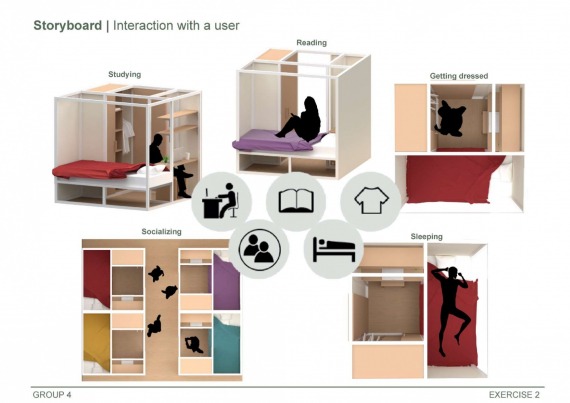
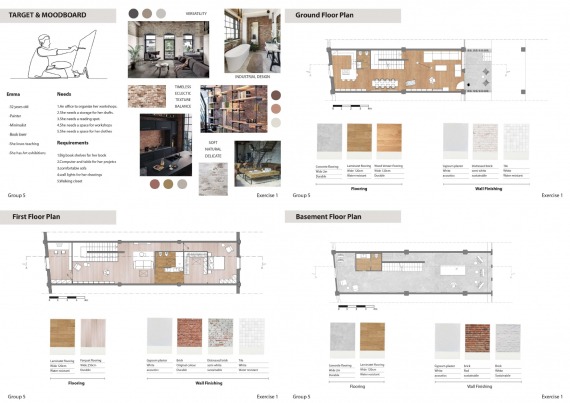
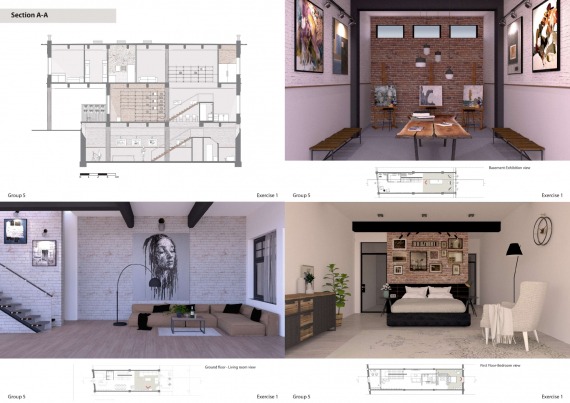
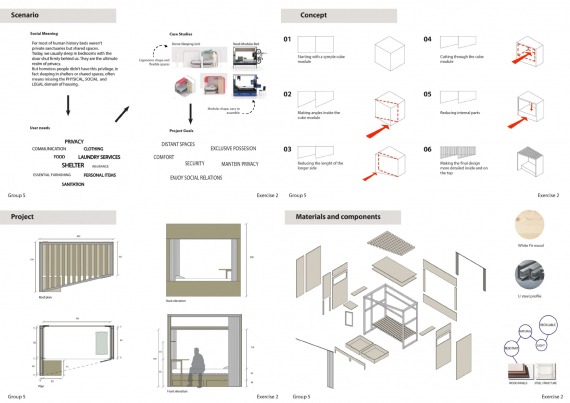

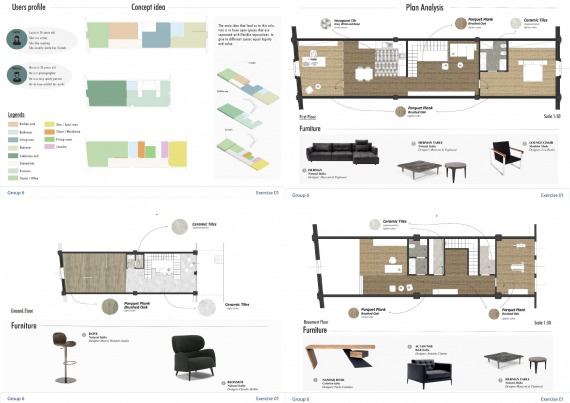
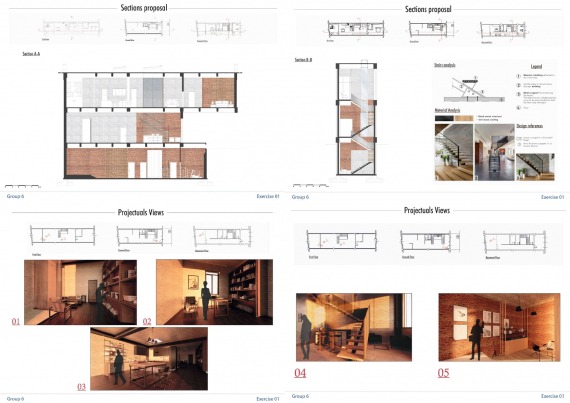
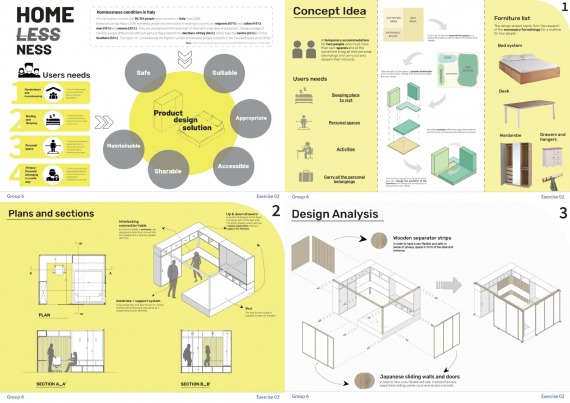
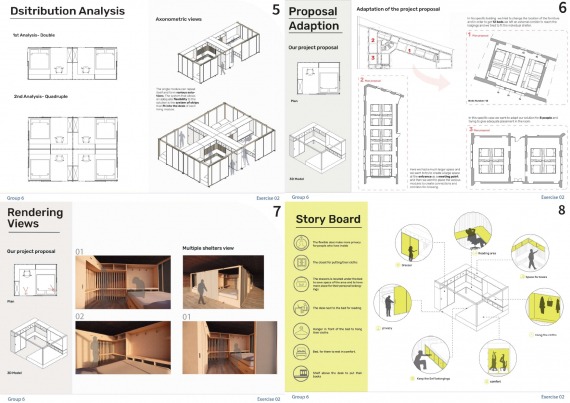
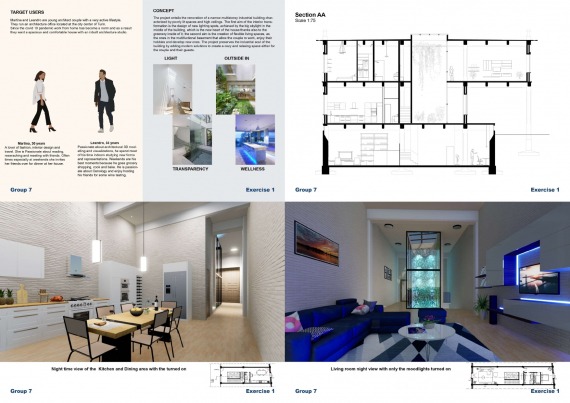
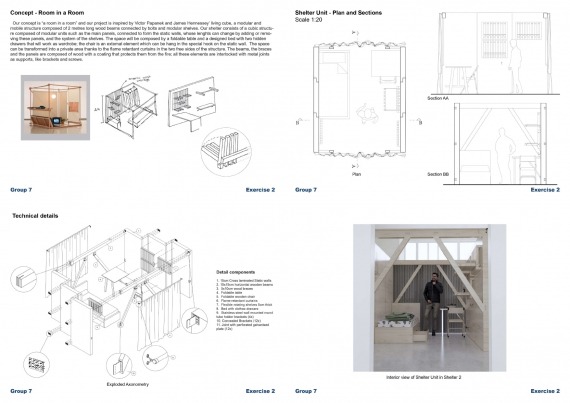
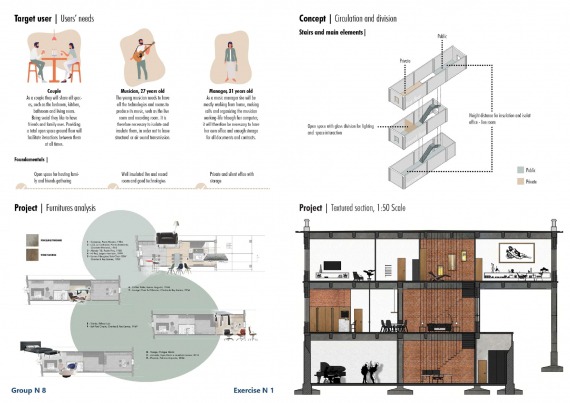

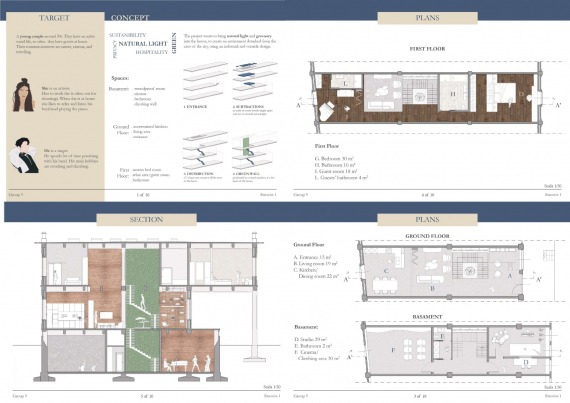

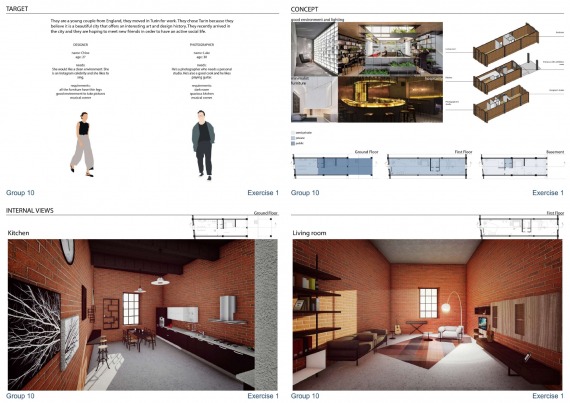
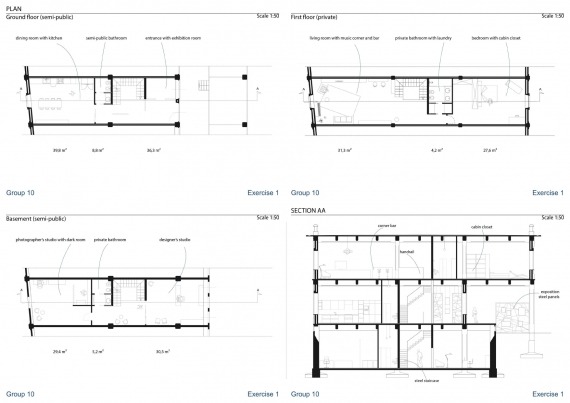
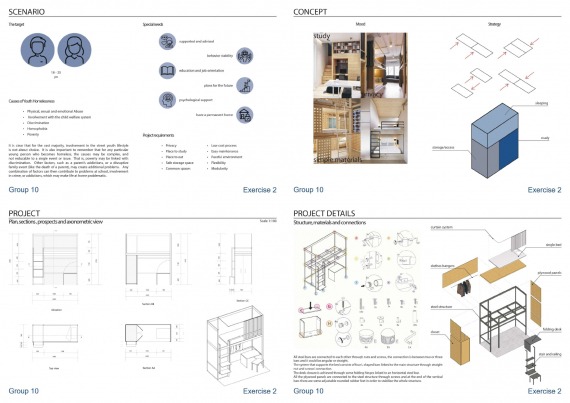
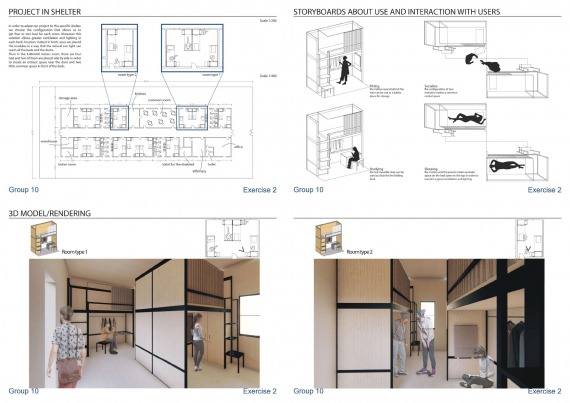
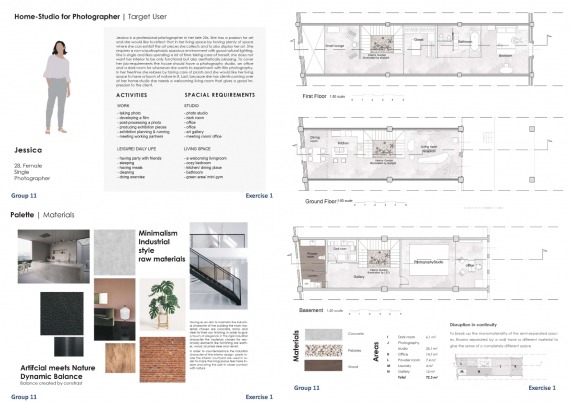
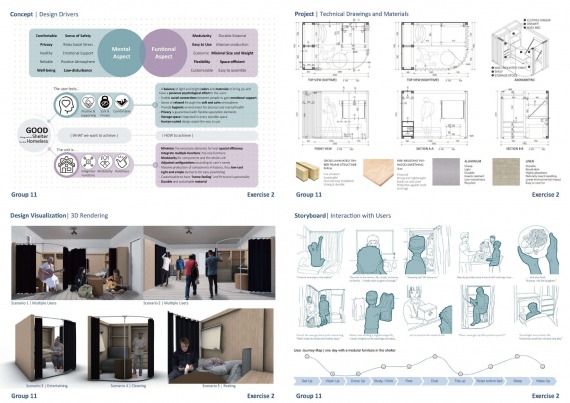

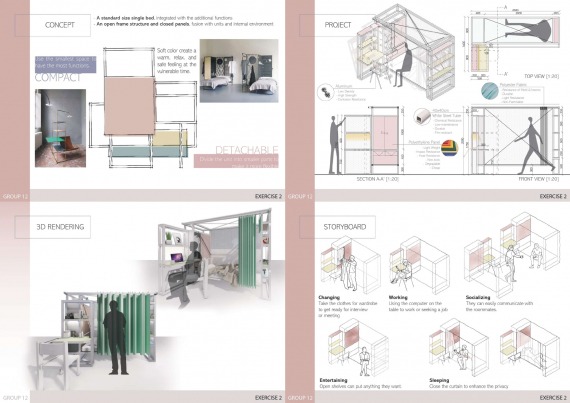
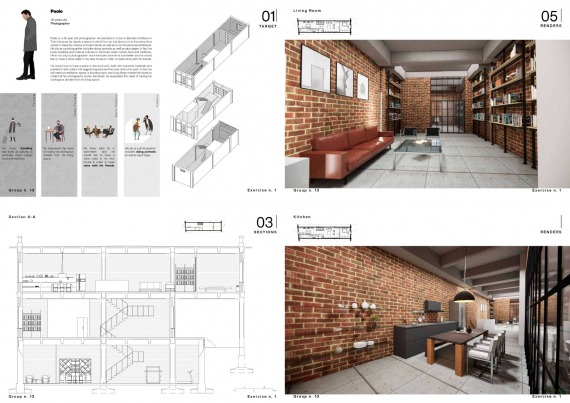
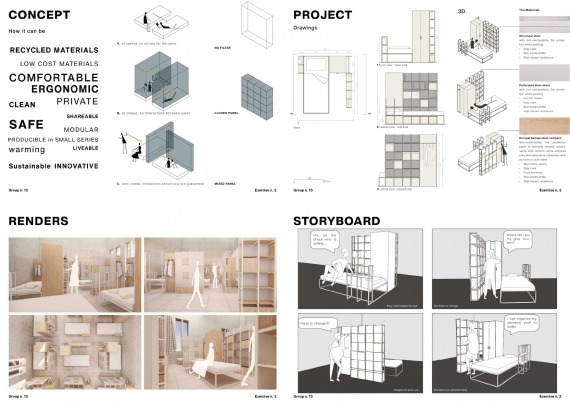
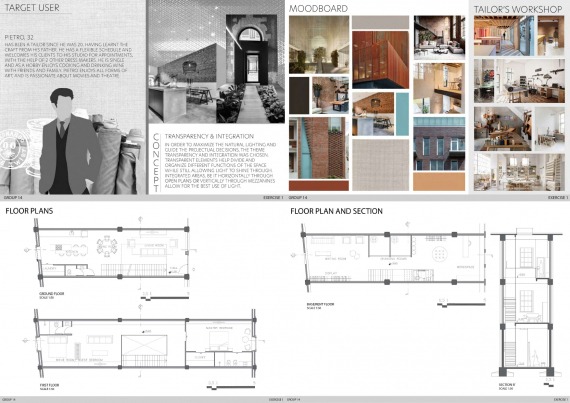
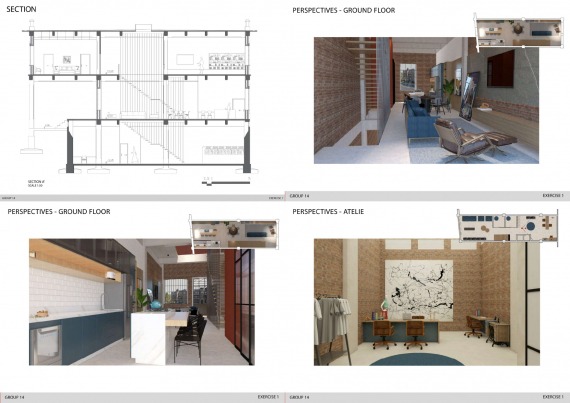

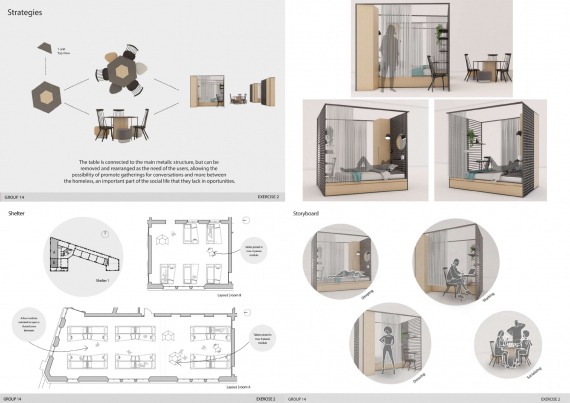
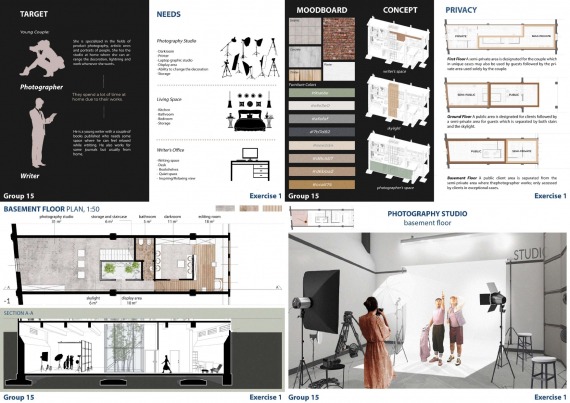
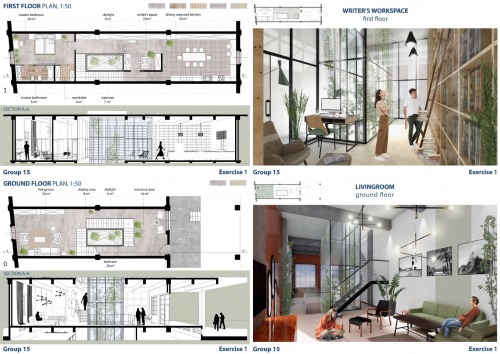
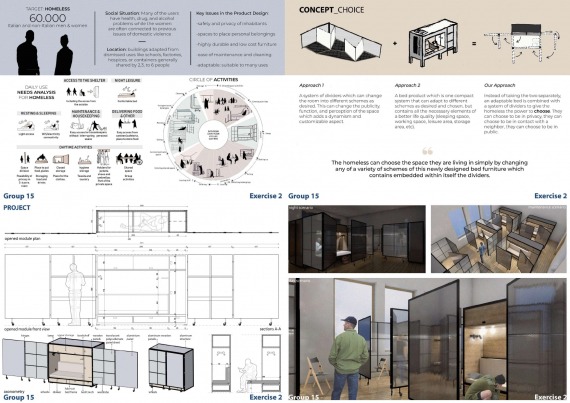

Design for living
The space of contemporary living, both permanent and temporary, is the field of investigation of this course that combines objective aspects – such as paths and relationships between the parties and the surrounding, constraints, brief - and subjective ones – for example cognitive accessibility, perception of space, user’s needs, Designing an interior inhabited space means taking the envelope or the context as a starting point and working on its "interior", working both on furniture and equipment systems and on the other dimensions, tangible and intangible, which allow the space to be inhabited, enjoyed and perceived as a place of functions and cultural and social meanings.
An artist's home-studio in a former industrial building and a bed system for homeless people living in day/night shelters were the topics of the two exercises developed during the course.
Studenti
Gruppo 1
G. Albanese, M.C. Cugudda, A.Lisi, F. Scanu
Gruppo 2
A. Anzola, C. De Vita, O. Serbest, S. Pispico
Gruppo 3
E. Ayik, M. Domanic, A.H. Macit, G. Stringhini
Gruppo 4
T.T.N. Be, A. Dremilyuga, M. Marangoni, N.B.A. Tarmizi
Gruppo 5
S. Foglia, L. Mulatero, A. Tayeby
Gruppo 6
O.K. Bilgic, A. Gabaldi, P. Niyai Pour, A. Toscano
Gruppo 7
F. Biondi, E.U. Omoregge, A. Vaglio, A. Azueta Rodriguez
Gruppo 8
L. Bredariol, M.C. Gunay, M. Ottin Bocat, V.S. Velioglu
Gruppo 9
L. Brustia, C. Jayatunga Arachchige, R. Paola, C.A. Vernetto
Gruppo 10
E. Cavagnero, B. Kong, A. Paolicelli, X. Wang
Gruppo 11
W. Chen, E. Kontogiannidou, X. Wei, A. Utun
Gruppo 12
K.Y. Cheung, A. Lauretta, D. Protto, Z. Zhao
Gruppo 13
M. Chiarabaglio, H. Li, A. Reali, L. Zotaj
Gruppo 14
M. Jaszczuk, I. Nascimento De Andrade, S. Pollis, A. Rodrigues Dilascio
Gruppo 15
E.G. Serinken, A.A. Stasica, A.A. Szczebara, C. Amengual Menendez

